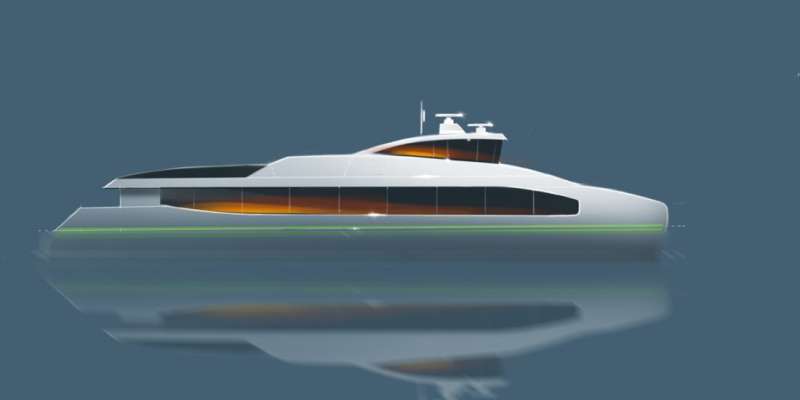Created an all-electric high-speed ferry
- November 22, 2022
- 0
The world’s first all-electric high-speed ferry has arrived. It was recently launched in Stavanger, in southwestern Norway, where it will take residents to and from the islands north
The world’s first all-electric high-speed ferry has arrived. It was recently launched in Stavanger, in southwestern Norway, where it will take residents to and from the islands north

The world’s first all-electric high-speed ferry has arrived. It was recently launched in Stavanger, in southwestern Norway, where it will take residents to and from the islands north of the city. The ferry can carry 147 passengers and 20 bicycles and develops a cruising speed of 23 knots.
Optimization of form and function
The ship was built from aluminum by Fjellstrand as part of a project called TraM. Fjellstrand Shipyard developed the basic layout of the ship, including the hull and passenger space, as well as the layout of the power system, evacuation equipment and bridge. Based on this, SINTEF researcher Einar Hareide fine-tuned and optimized the ship’s line layout and functional nature.
“A positive user experience is the foundation of good design,” says Hareide, who is trained as an industrial engineer. “Our goal is to make passengers feel safe and comfortable, as if they were traveling in the transportation system of the future – enough to make them want to travel on board again,” he says.
Identity creation
“My mission was to give the ship a clear identity within existing fundamental principles,” says Hareide. “It’s mostly about creating a cohesive design with a distinctive character that will contribute to a positive user experience,” he says.
Engineering components such as the battery and electric motor constitute the main constraints in ship design. There are also many legal requirements that must be met, from sight lines from the bridge to providing space for safe and comfortable passenger movement. There are many technical know-how and areas of expertise involved in such a project.
“The biggest challenge on this project has always been overcoming the technical limitations that existed from the very beginning,” says Hareide. “Integrating the battery pack protruding from the rear of the aft deck was particularly challenging,” he says.
Creation of innovations
It is important to always ask questions during the design process. This project involved a process in which many partners contributed.
“It’s all about dialogue and maturation of ideas,” says Hareide, who combines research as a designer with her work. “After a while it often leads to insights and solutions that we didn’t know at the beginning,” she says.
An industrial designer gathers and balances technical information and requirements from many different sources and combines them into an integrated product in close collaboration with many other experts.
“The benefit of being an outsider is that I don’t see some of the limitations that other experts in the field have acknowledged,” Hareide says. “This allows me to challenge conventional wisdom and facilitate dialogue that can be innovative,” he says.
modular design
In this project, Hareide found it important to think in terms of “modules”. Everything from the smallest components to larger modules should be able to be recycled and used on other ships in the future.
“The plan is to build a fleet of all-electric high-speed ferries,” Hareide says. “That’s why it’s important to think long-term and plan for all possibilities. When you develop new and sustainable products this way, you help reduce resource use and rationalize the way products are produced,” he says.
Source: Port Altele
John Wilkes is a seasoned journalist and author at Div Bracket. He specializes in covering trending news across a wide range of topics, from politics to entertainment and everything in between.